Before we kick off the weekend, we have a quick addendum to our previous update on 99 South Broadway. Thanks to Nate with OZ Architecture, the firm designing this project, we were able to obtain a new rendering and some additional information.
This project is now known as “Neon Local”. We never mentioned a final count of parking spaces but we now know that this will contain 269 underground spaces dedicated to both the residential and retail uses. The unit count remains the same at 238 apartment homes.
Without further ado here is the full un-cropped rendering of Neon Local. This rendering shows the project from the intersection of West Bayaud Avenue and South Broadway.
The broken up facade along with the heavy use of brick really makes this project a winner. We are excited to see it complete!

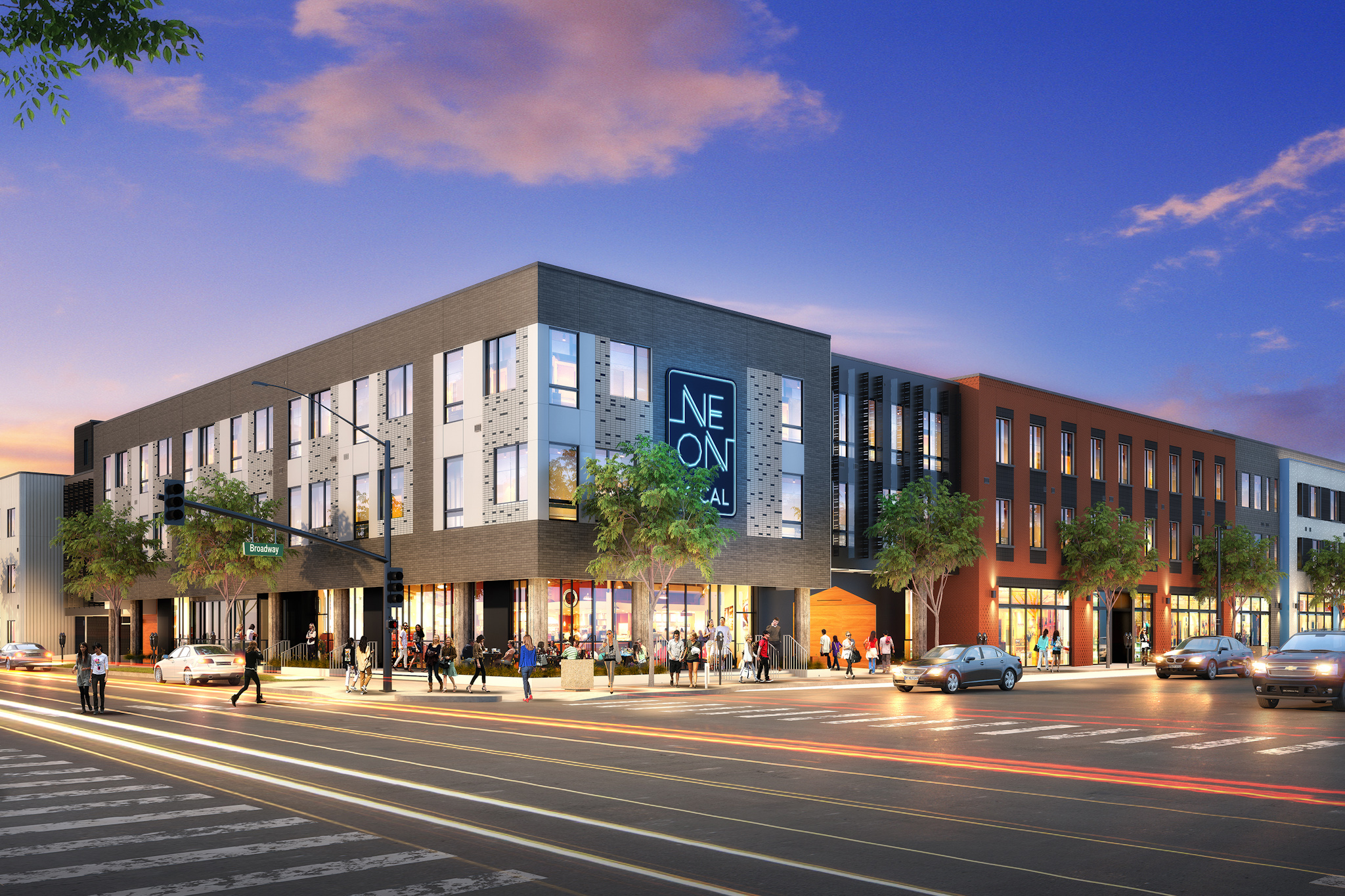

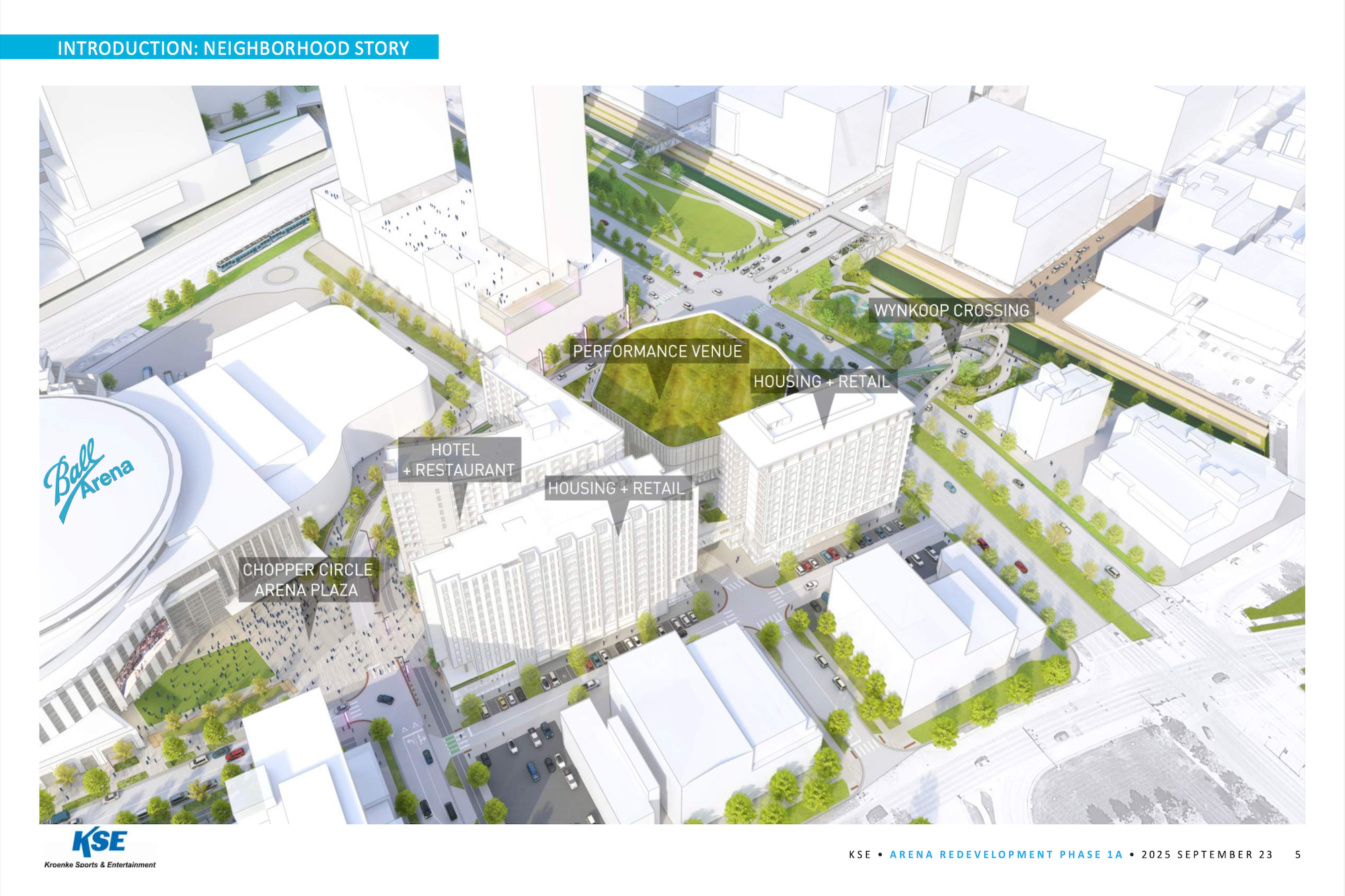
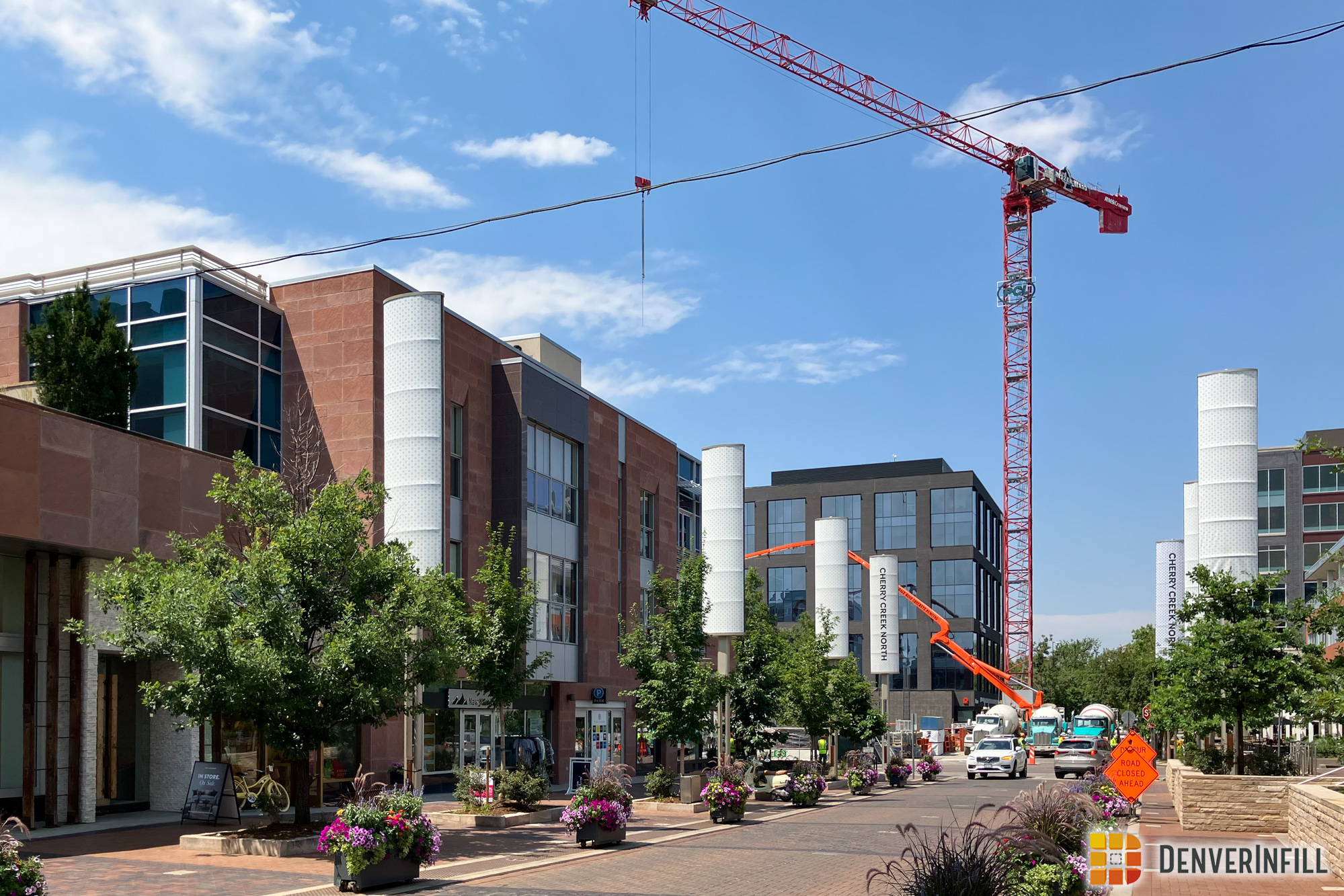
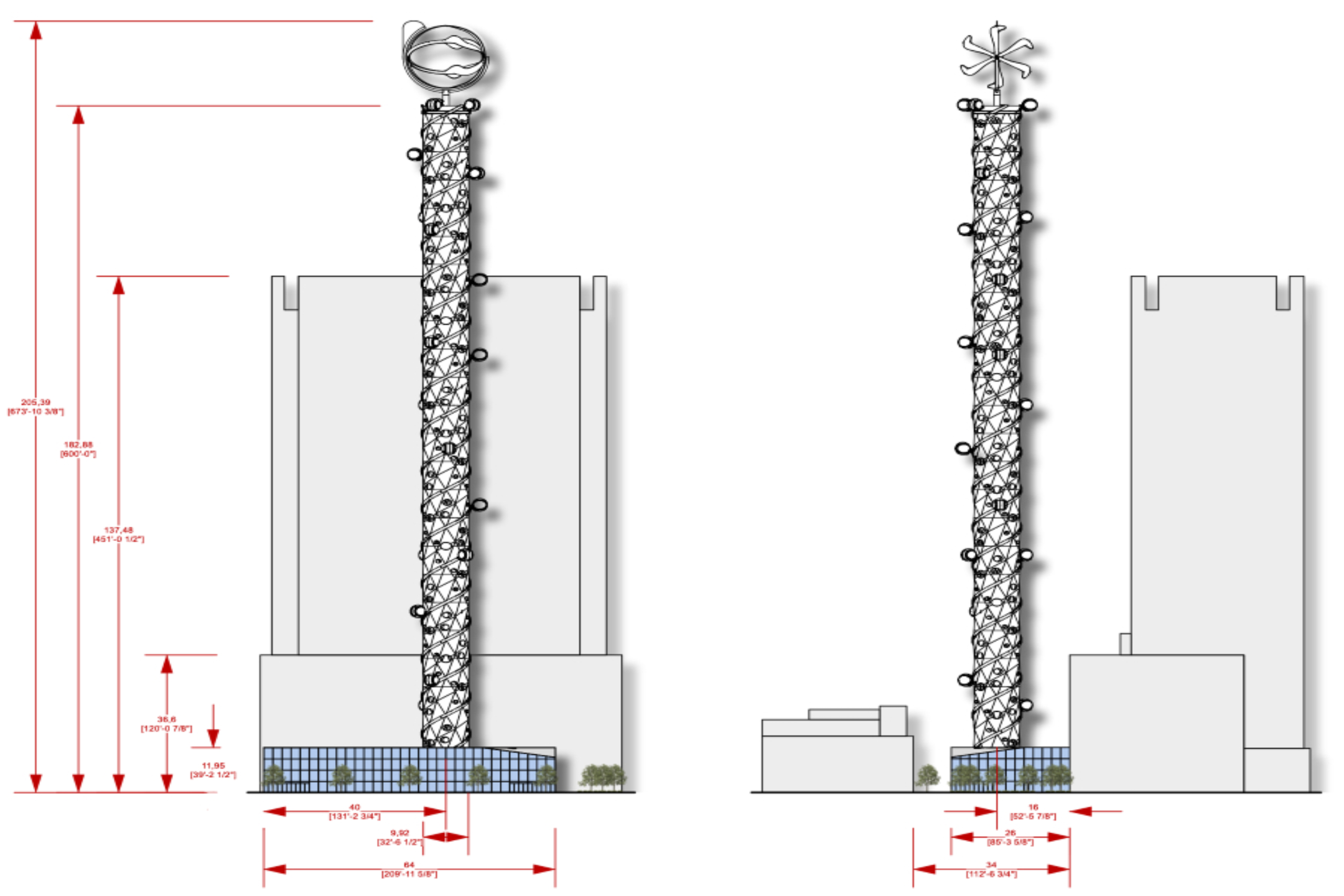




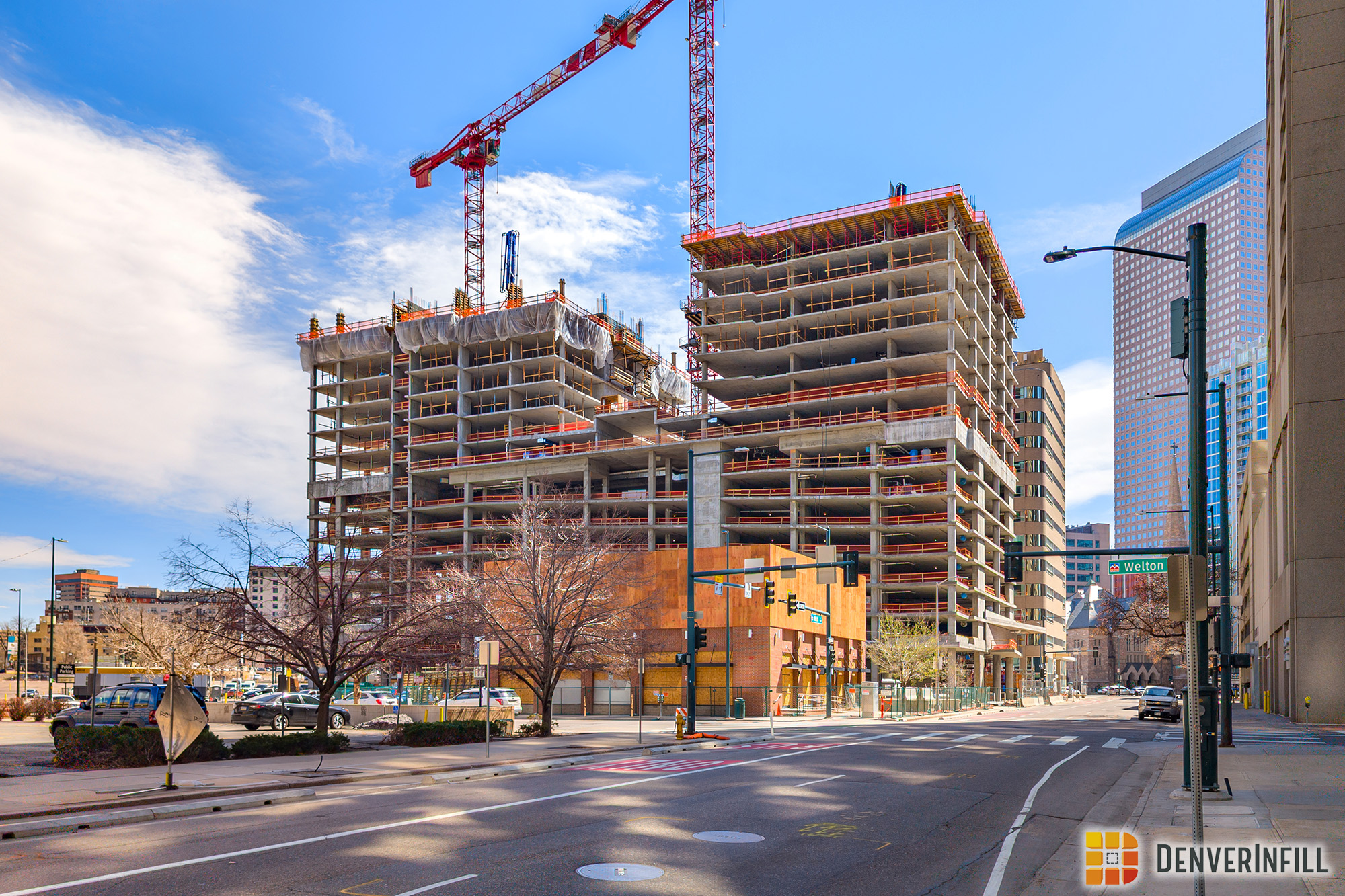

I like it. It’s a very attractive building. Well proportioned, breaks down the scale of a block sized building and uses timeless materials in a way that I think will age well.
So tired of hearing the word “timeless” in relationship to architecture.
Then quit reading about architecture.
No. He has a legitimate point. Timely vs timeless is a conversation worth having and casually throwing the word timeless around diminishes its meaning.
Architecture can be seen as an expression of the culture which creates it. So, in a sense, all architecture is timely. That timely-ness in inherent to architecture.
The term timeless, I think, often gets used to mean that a building ‘ages-well’. Many things can help a building age well : well-resolved siting, massing, and context, materiality, and considered detailing.
All this to say, that timeless does have it’s place in architectural discourse, even if it’s an often overused or misused term.
Again, I am not saying the building is timeless. The material is timeless. I didn’t say, imply, or mean timely. And,I actually know what timeless means and used it the way I meant it to be. Only time will tell if this particular use of the material on this building will make the building timeless. I don’t actually care. Really, my comment was pretty transparent and simple with no philosophical baggage. I think brick is timeless. There, I said it. And, I still think it is an attractive building.
This looks great! Is there a name/term in the architectural world for a building’s facade that is broken up into vertical sections, effectively looking like different buildings altogether?
In no way is this “timeless” – this is a (mostly) two story brick apartment building on broadway, not a Louis Kahn building. That being said, i’m sure everyone can be happy about the amount of brick. The realy tragedy here is lack of height. I can’t understand why Broad and Lincoln aren’t being treated like the dense urban corridors they should be.
With parking being underground, it seems like one can get a decent amount of density even with only 3 stories. If all of the parking were underground, it seems like a lot of the buildings in Denver could probably be considerably less tall and yet still have the same density! Which imho would make for a much more pleasant “human” experience.
Human? Isn’t that vague and basic at best? Here it comes the redefinition of urban? Is this what thousands are learning from ULI? Speculating it’s a kinder gentler urban = suburban. Environmental is another word that comes to mind that has been redefined to be biased with an single focus on plants as being more distinguished with nature than man made substances used to create building masses. On the other hand man made shrub boxes or lawn spaces are supposed to emanate what it is to be human? For the ‘city center’ I would still personally choose historic
architectural styles of Manhattan or Chicago as examples of urban over say a certain level of “density” as say the Washington Park neighborhood. But see it’s all still opinion whether it’s from implied professionally authored thinking or some bum’s coffee shop chatter. It’s not just so as ‘the’ truth and just because it’s being taught as human experience from what’s considered current or new improved urban. I’m saying it’s still just a sort of denser but SUBurban by original definition. So because apparently taller building mass (for future expansive) isn’t human friendly. And still the description ‘human’ is vague for the broad brush. I would say urban lends to itself the original meaning or more to “extraordinary” human experience. If every structure was built with more attention to detail like the Chrysler building then the human experience would come from the appreciation of architecture moreso than if say shrubs or lawn were present.
Thus the comment said “timeless materials”…, not the building. I still think it is a nice building even if it doesn’t meet with your rather limited and narrow requirements.
Really glad this is getting done. Very productive for the retail area.
But can we have a conversation? Or is Infill discourse limited to a supreme inner circle of professionals deciding for most such commoners?
And of course I have a suggestion as well yet definitely not specific to this retail plot, more so indirect commercial strip housing and this is addressed to city planning and zoning. Increase the height limits already. What are we afraid of? Height = not pedestrian friendly? Really? No, height increases positive numbers, increases everything urban community positive. So the planning department has a projected buildout of how many people can fit and that is the assumed guideline leading all activity? What school of thought was that made from and isn’t that thought substance of perspective still constructed from a style of idea or assumption not fact? Look at the outcomes already in place in the center city. I think 3-4X more residents would be more ideal for the positive pedestrian experience, Good for retail business, good for entertainment, diverse engagement and of course restaurants.
I’m not seeing enough people on the streets especially in the south Broadway Terrace. Mix it up with height variables which would add more residential quota, more bodies, more shoppers and diners. What gives? Are heights so restricted to preserve the “Mayberry” atmosphere as part of the historic charm? Certainly there is enough targetable land. Could it be the view plane from the sidewalk? Or amount of sunlight blocked? If so that reasoning doesn’t cut it because a block long 3-4 story building still blocks out sunlight for the entire block of sidewalk. You know these anti-growth NIMBY residents didn’t just wake up with that attitude or belief, these community based ideas are influenced by the power of suggestion and pushing ideas into an ideal. I would like to hear what theory or vocational belief is keeping the waters so calm it’s not really urban it’s SUB-urban. It’s almost too bad I’ve been paying attention for so long that the change that has happened doesn’t match past growth curves and it’s putting me to sleep. Anyone else of the thinking that please can we infuse the planning department with more vigor, possibility still awaits?
First, in reference to the use of the word ‘timeless’, Larry stated that the materials were timeless, not the architecture. Brick has historically been used and will look better well into the future, because it provides detail and interest to the eye at multiple scales and distances. Second, the building is only three stories because the neighborhood did not want to accept an upcoming to 5 stories. What is unfortunate is that, in the most recent city-wide rezoning, it seems that the city opted for the zoning to match the existing buildings along this section of Broadway instead of thinking of the future.
Thanks Jerry, as I suspected really. In my rebellious opinion, and like I said I’ve been observing for too long is the sad fact that I have different aspirations with perspective to what defines urban or visionary, but to me it seems Denver when it comes to neighborhood group chatter plans from all regard to preserving mostly the past and not for “a future” with subtle change. Not a very expansive one at that. But my ideals are variable to outlandish and I believe that when we’re talking about core cities, if the investment is there, why not the sky’s the limit with general respect for quality historical landmarks. If you want a ‘view’, live in a tower. And for this old boy who grew up in NIMBY Boulder and watched the cost of living skyrocket with the exclusiveness by anal retentive growth policies there, I’m seeing just another gracious medium version of that happening almost statewide now. It is happening neighborhood by neighborhood which is actually who controls the planning department, not the future. So as the frog boils, within ten twenty years Denver will become a pristine expensive classy-glossy place just like the republic of Boulder, Aspen or Vail while only acting tolerable to differing elements of society.Colorado generally has already gained that reputation from the outside. I didn’t find that kind of experience wholly urban or livable but that’s just my opinion. Meanwhile as the center city tries to expand, looking like that isn’t open to more than a moderation of ideas which makes me wonder if the old Gart Brother’s site will be downsized as well.
regarding JerryG’s comment, first, the neighborhood reaction to the 5-story rezoning proposal was not definitive; the proposal was badly-framed (“support rezoning or we will build something ugly”) and loud voices were heard, but the issue was never allowed to come to a head; instead, the developers seemed not to bow to the community so much as run from uncertainty (including the time a rezoning would take); when the lot then sat idle for months, that decision seemed silly
second, with few exceptions, the surrounding retail buildings are one and two stories, so the 3 story zoning represents a substantial potential density increase, not to mention that much of nearby Broadway, including across the street, is zoned for an unrealized 5 stories anyway — that this U-MS-3 lot was more available than those with denser zoning reflects the stutter-stop progression of development more than a lack of vision for the corridor
further, acres and acres of developable land south of Alameda, with much higher density allowances, are developing very slowly, and what has been built are apartments with negligible retail — in what was supposed to be a vibrant mixed use area
and to top it all off, the final number of housing units (238) is in the range we were told the 5-story zoning would have enabled (235-255), and it looks like there is more retail space than we saw in the rough 5-story design